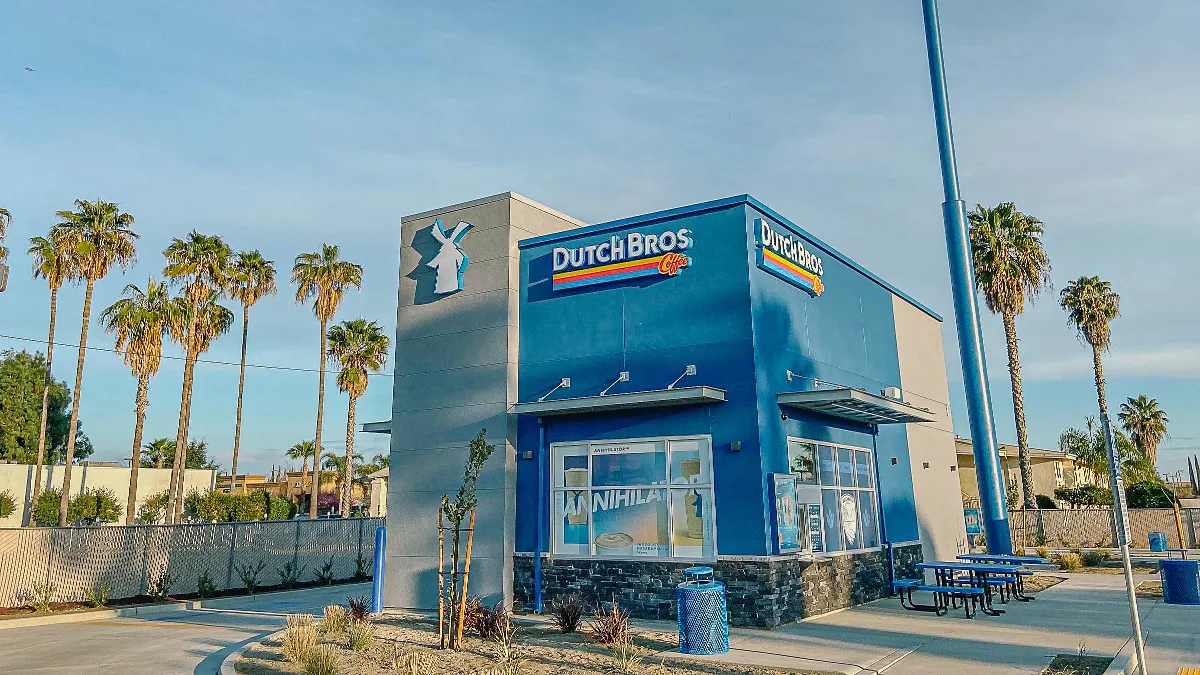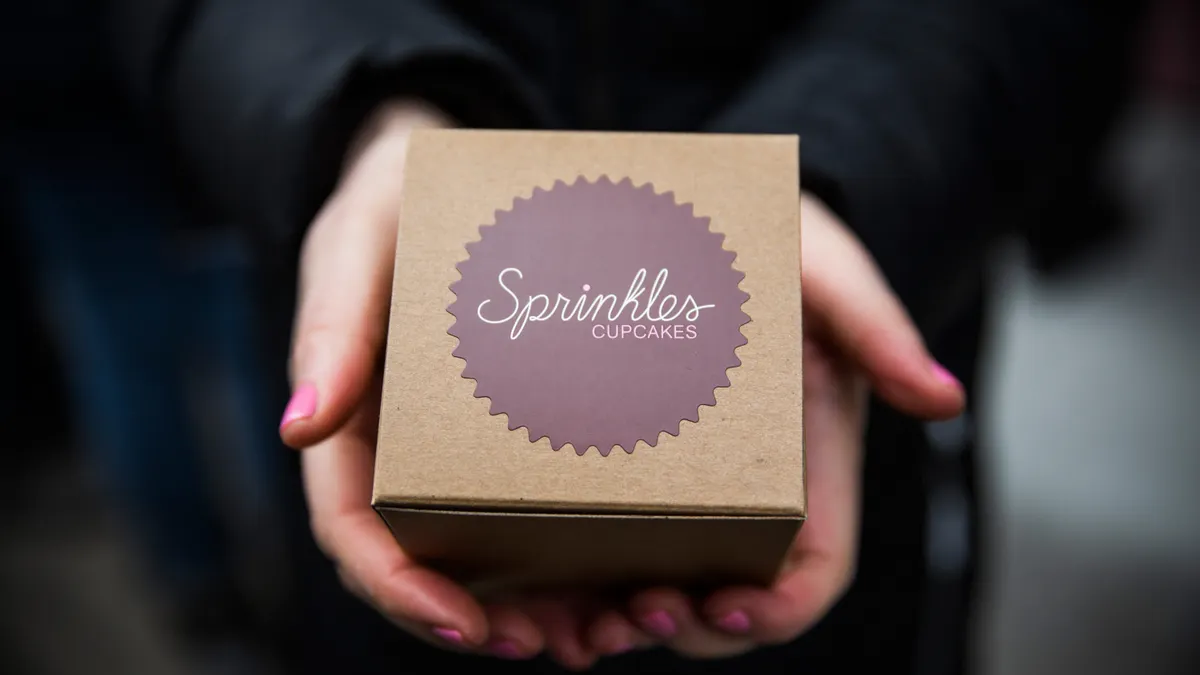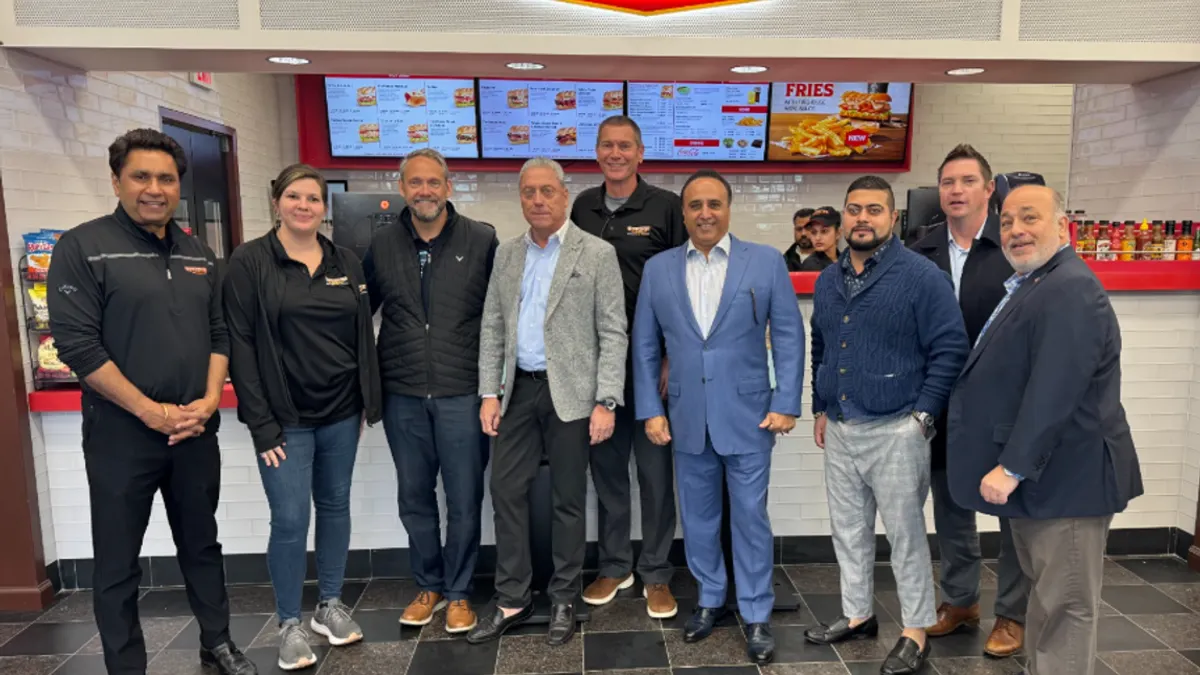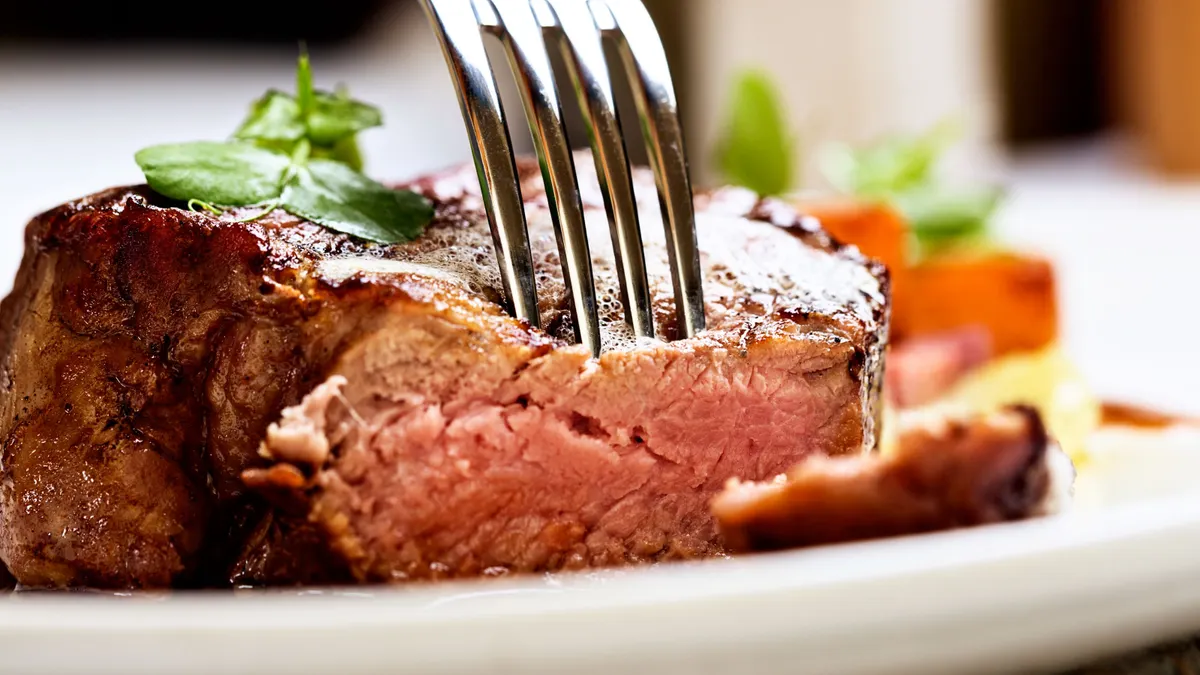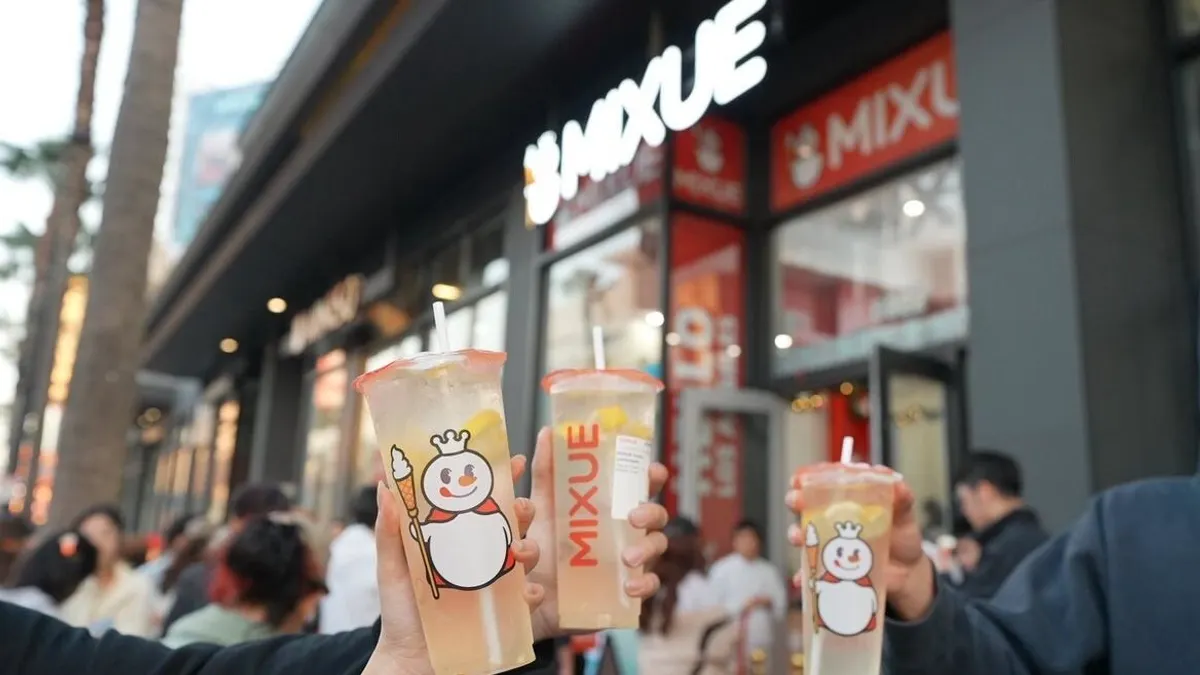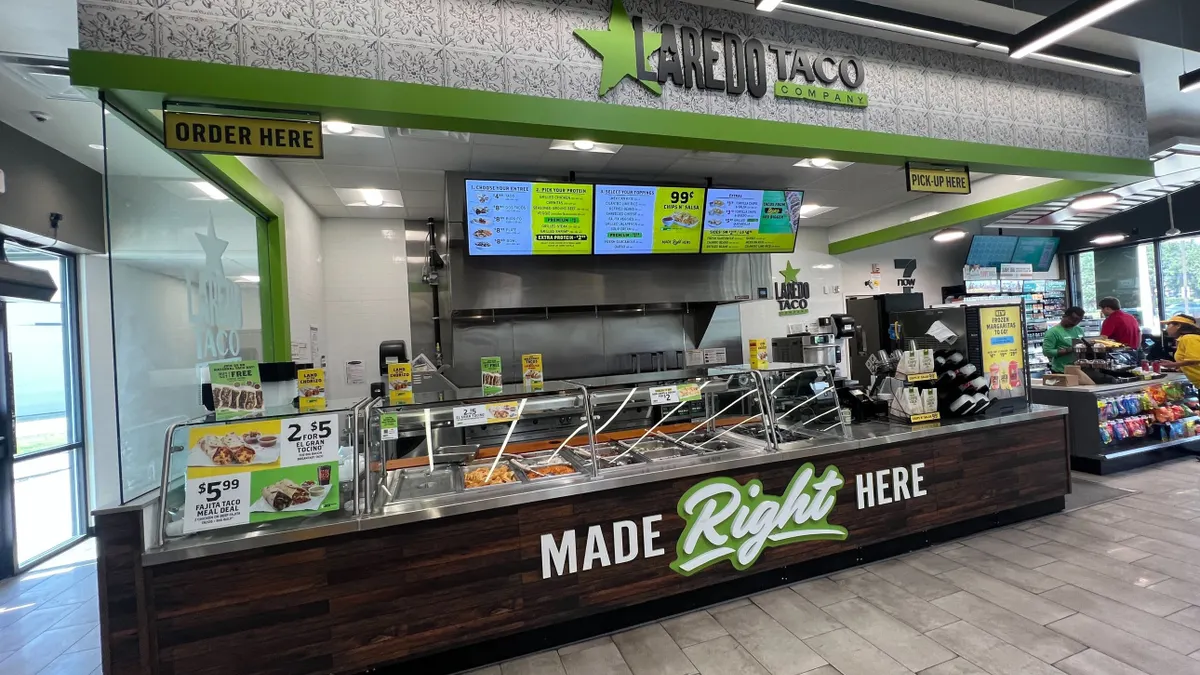This is the first in a series exploring strategies chains are deploying to overcome challenges as they expand their drive-thru channels.
When drive-thru-only coffee concept Dutch Bros went public in 2021, it had over 470 shops across 11 states. But the development pace has been brisk — the company expects to top off its first full year as a public company with 130 new shops, CEO Joth Ricci said during the company’s November earnings call.
During the third quarter, said Ricci, Dutch Bros opened a record 38 shops — nearly the sum of store openings for all of 2019. The chain has opened at least 30 company-owned cafes a quarter since Q3 2021, he said.
But Dutch Bros has faced development hitches. “The challenge now is probably surprises in the supply chain that can really disrupt the predictability of a project,” Dutch Bros COO Brian Maxwell said.
Even the smallest delays, like waiting for internet service installation or for small hardware deliveries, can throw off a project. Maxwell said Dutch Bros’ procurement and construction teams have been keeping tight relationships with vendors to ensure it’s viewed as a good partner and stays top of mind.
Dutch Bros has 61 units under construction across the country, Maxwell said. The chain’s locations are on the smaller side — roughly 865 to 900 square feet — so it only takes about four months to build a location, he said. This is a quick turnaround, as other restaurant sources told Restaurant Dive drive-thru builds can take over 12 months.
Construction and development timelines are lengthening, spurring many chains to not only adjust their development projections but also create space-saving small prototypes. With customer demand for off-premise meals rising, it’s not necessary — or in some cases, practical — to have large dining rooms.
Taco Bell franchisee Diversified Restaurant Group opened its first Go Mobile store in July. The company is using this unit as a test to see if it will be able to build restaurants on a smaller footprint, Todd Kelly, co-chief operating officer at Diversified Restaurant Group, said. These units are 40% smaller than a traditional Taco Bell, he said.
“Unfortunately, everything's taking more time and more money to build these days,” Kelly said, referencing labor shortages and supply delays and shortages. “And that's why, across the industry, people are looking at creative ways on how to save construction costs, which are, in general, 40% or 50% more than what they were just a few months ago.”
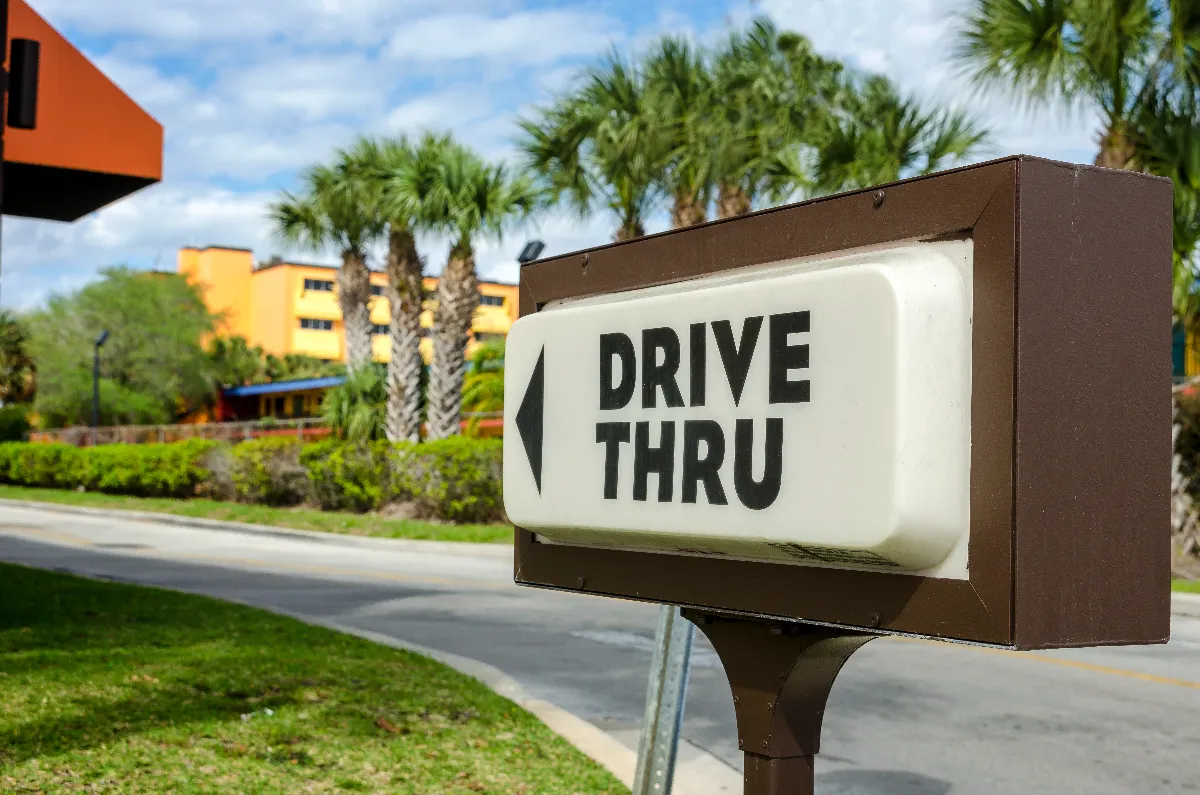
Operators need to be discerning with site selection
One of the biggest challenges for restaurant chains expanding into drive-thrus is site selection.
“Drive-thrus are very rare to find because everyone is competing for one. Everyone’s looking for one. Every QSR, every fast casual restaurant out there,” Atomic Wings CEO Zak Omar said.
Atomic Wings, which has over a dozen locations, is planning to open its first drive-thru this year.
“We’re all competing for that same drive-thru real estate and [it’s] really difficult to find. You’re going to be paying a higher rent,” Omar said. “Construction costs are a lot more. … What our research has shown is drive-thrus perform about 30% higher in sales volumes than traditional stores.”
But there is still plenty of opportunity out there, especially for chains with discerning appetites. Maxwell said Dutch Bros doesn’t target locations that can create the highest AUVs but strategically penetrates markets where it can build share over time. “That allows us to kind of be on the fringe sometimes compared to the main trade areas of those big players,” he said.
As an emerging brand with a strong sales record, Hawaiian Bros has lost out to bigger brands on deals for locations, and sometimes has to pay higher rents to secure an ideal location if the landlord isn’t familiar with the brand, Cameron McNie, Hawaiian Bros co-founder, said.
Securing sites has gotten a bit easier for Hawaiian Bros now that it has 35 locations and can show a history of its operations. As a smaller company, the chain also has the ability to get back to landlords quicker and sign leases quicker than larger brands that have more leaders who need to sign off on deal terms.
Hawaiian Bros will examine the sales of other QSRs operating in a market it’s considering and how those specific sales compare to the national sales average for that chain. McNie said a preferred site will have plenty of parking and be anchored by a large retailer like Home Depot, Walmart or Costco.
Hawaiian Bros is casting a wider net beyond the company’s current market footprint of the Midwest to ensure that it is finding Class-A real estate. McNie said the chain has found locations in Oklahoma City and San Antonio, Texas, and is considering other markets in Texas, including Austin and Houston.
For Schlotzsky’s, site selection to test its new off-premise prototype, which features a double drive-thru lane with a pickup window, was straightforward. It chose Oklahoma City since it has several company-owned and operated restaurants in the region, said Shelley Harris, former interim chief brand officer at Schlotzsky's and current Focus Brands restaurant category president. The company has strong brand recognition in the city and consumers are willing to provide feedback on their experiences with the new prototype, she said.
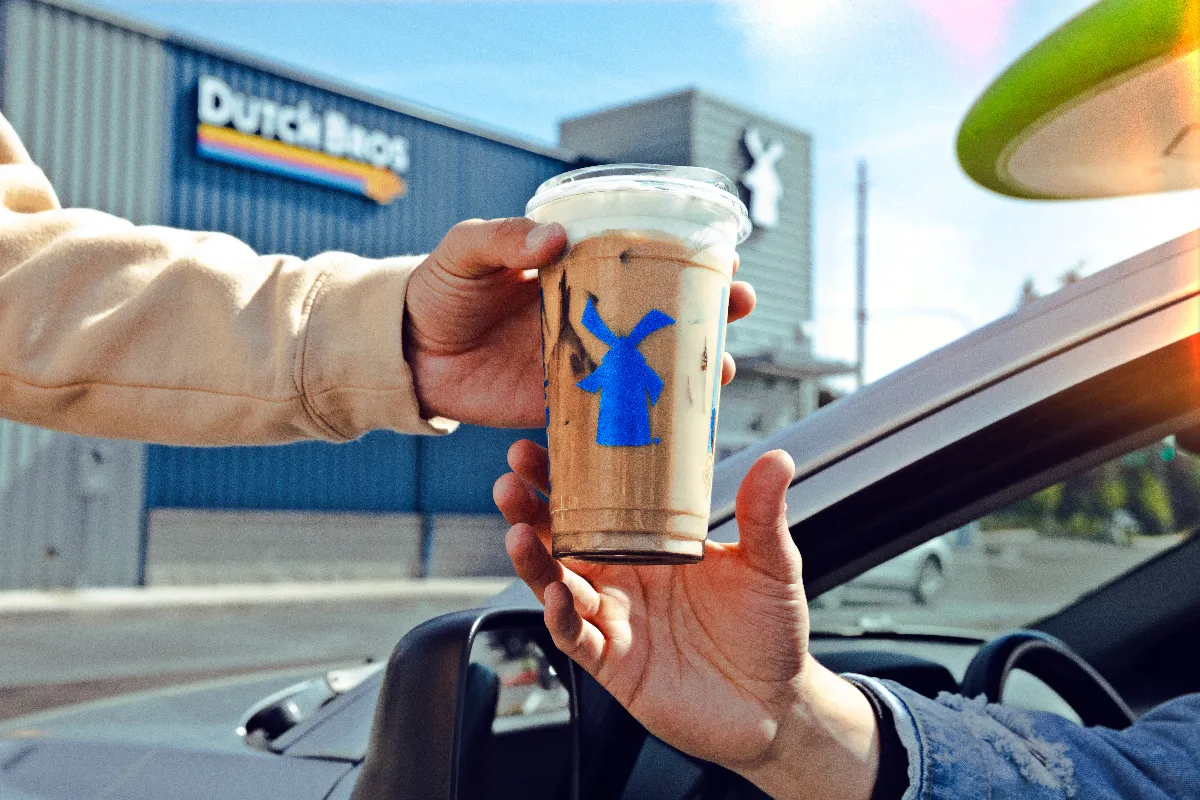
Sharp permitting, construction strategies are key
While many municipalities have increased scrutiny over drive-thrus in recent years due to traffic concerns, pandemic-era dining room lockdowns have made many more amenable. But restaurant brands still often need to make their cases for drive-thru proposals with cities.
To work through the permitting process with local municipalities, Maxwell said Dutch Bros explains how its location will benefit communities and local businesses. It also tries to align with developers and vendors that are like-minded, he said.
For Hawaiian Bros, the permitting process has been different in every jurisdiction it has locations. In one market, the company heard that the local government was moving away from drive-thrus.
Once Hawaiian Bros management met with a committee of city officials and made a case for the benefits of the restaurant, they convinced the city to allow the drive-thru because the site had plenty of room in the parking lot to add a drive-thru. McNie said the company also argued that drive-thrus are fast so traffic would move quickly compared to a restaurant without one, and mentioned the restaurant would create 100 local jobs.
For Smokey Bones, opening its first drive-thru in Bowling Green, Kentucky, went smoothly because the city was amenable to its permitting and construction needs. Smokey Bones also had an experienced management team in that market, which was an important consideration when adding a new channel to an existing business, Smokey Bones CEO James O’Reilly said.
The construction of the drive-thru had minimal negative impact on the chain’s Bowling Green restaurant because most of the building took place outside the restaurant, O’Reilly said.
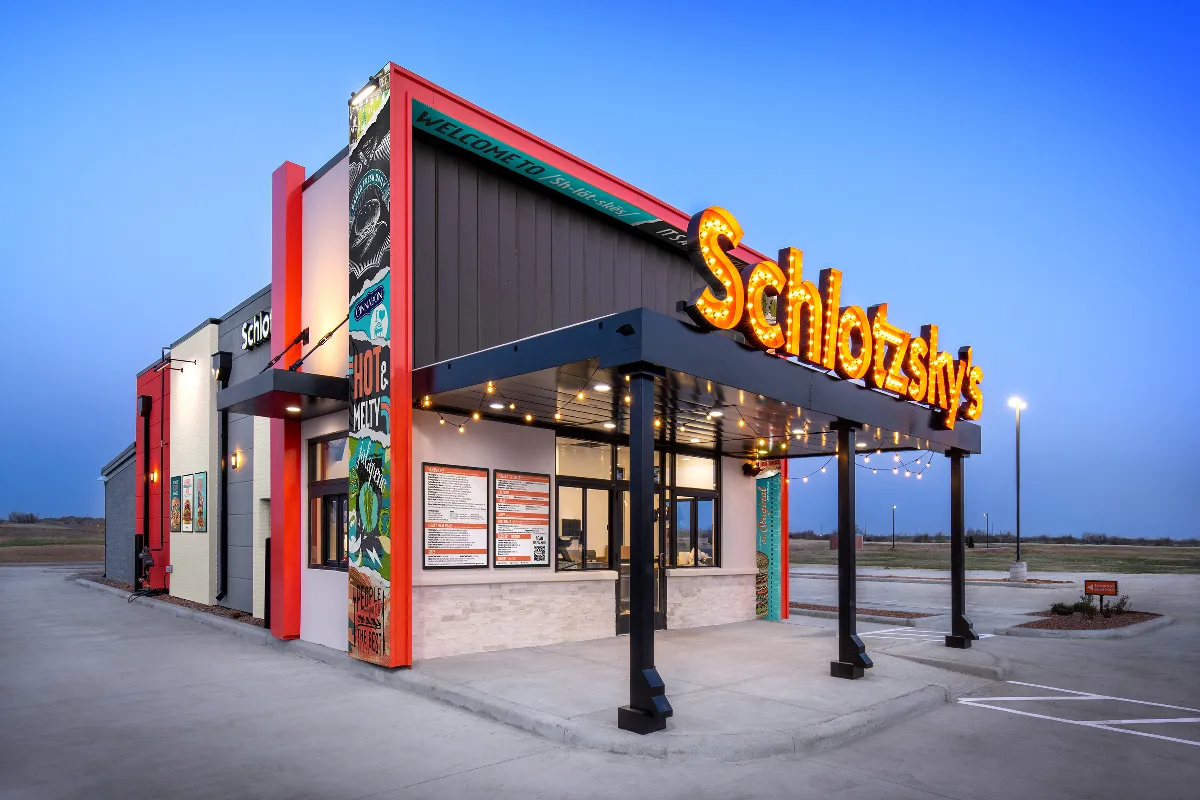
Schlotzsky’s argues that its new double drive-thru design won’t cause more traffic, but improve flow and leave fewer cars waiting in line.
Harris said cities have responded favorably to this pitch. “There is a bit of education that has to go on with the city to say it’s not doubling necessarily the drive-thru capacity, but it is actually creating efficiency in terms of getting those cars through faster, which should be a better experience for consumers who are not trying to get into our drive-thru lanes,” she said. “They’re not impeded by drive-thru as much as they were perhaps in a single drive-thru.”
As far as reducing construction costs goes, Schlotzsky’s 1,000-square-foot unit uses about 60% to 70% of an acre. The small unit also doesn’t require furniture or fixtures, Harris said. Less labor is needed to clean the restaurant, and these employees can instead be used in the kitchen to help get drive-thru orders out faster.
“I think it's going to take us some time, but we certainly anticipate that there will be a palatable savings for our franchisees as they go to market in some of these smaller units,” Harris said.
Correction: A previous version of this article misspelled Shelley Harris’s name and misstated her job title. She is the restaurant category president for Focus Brands.


